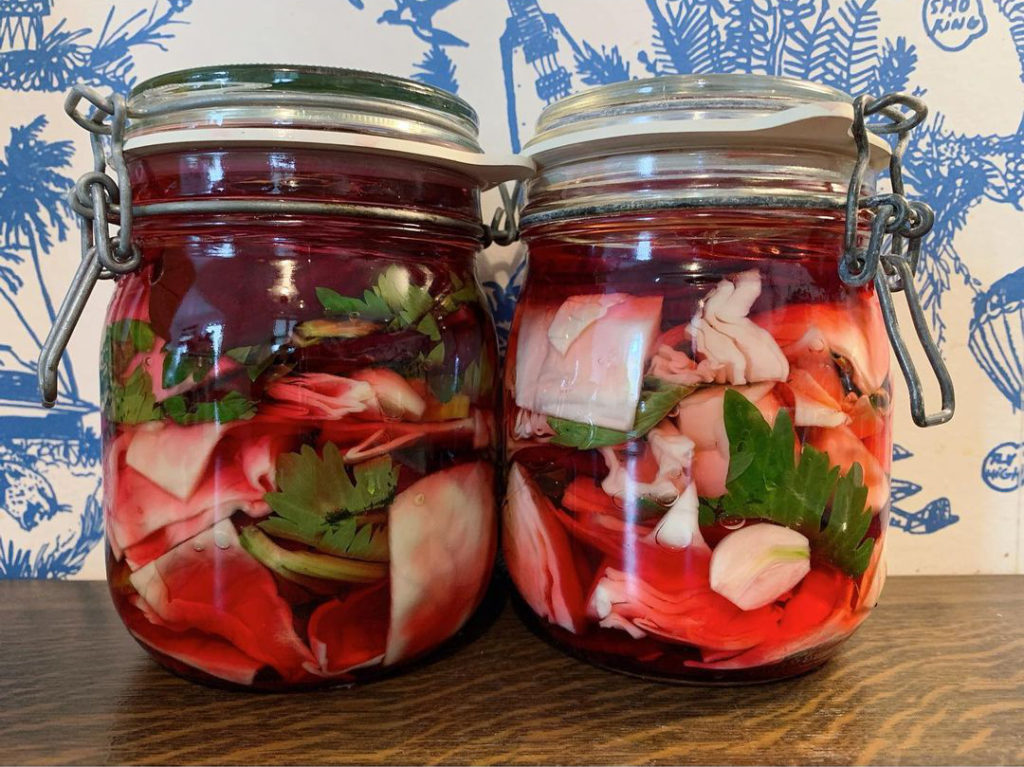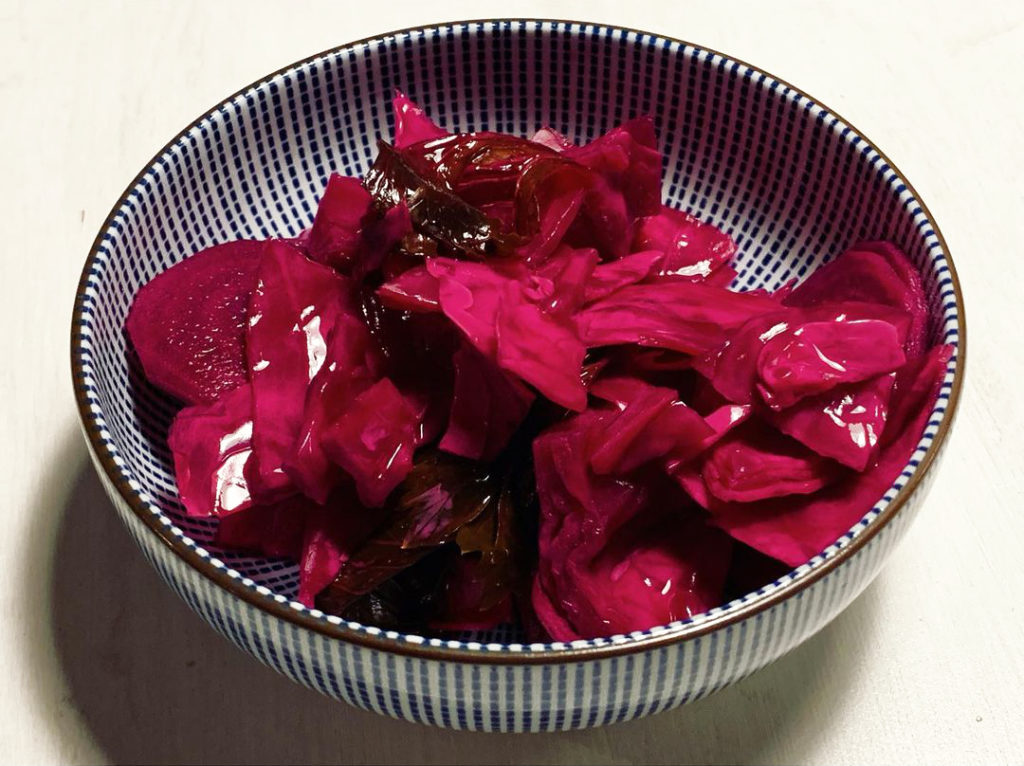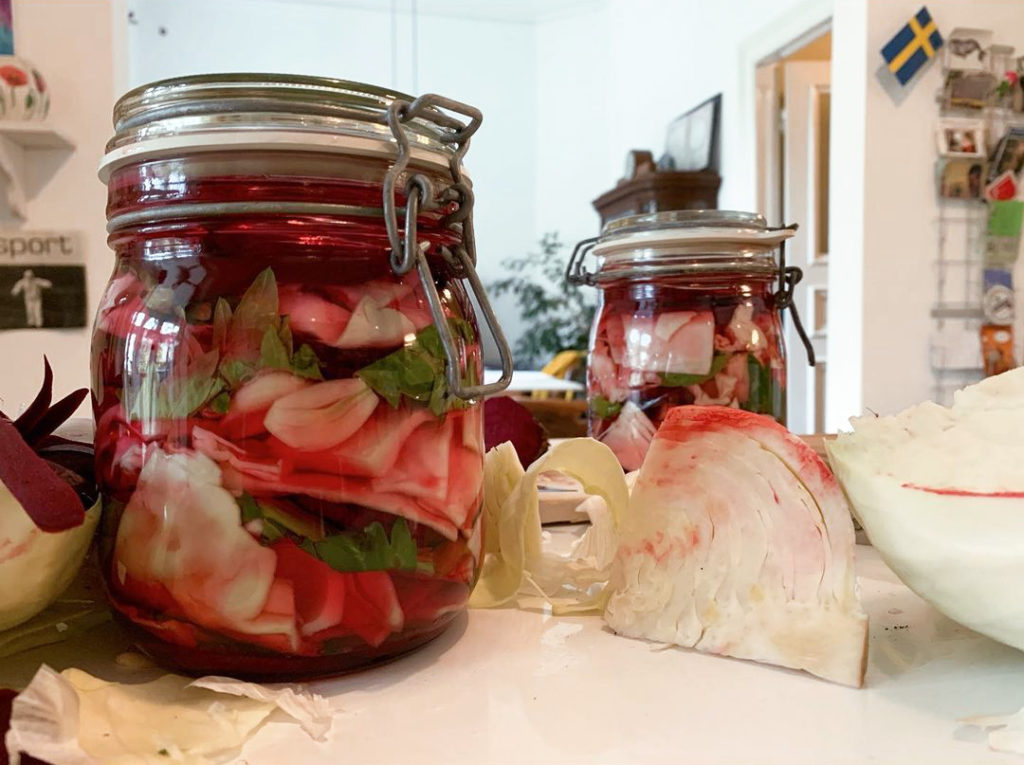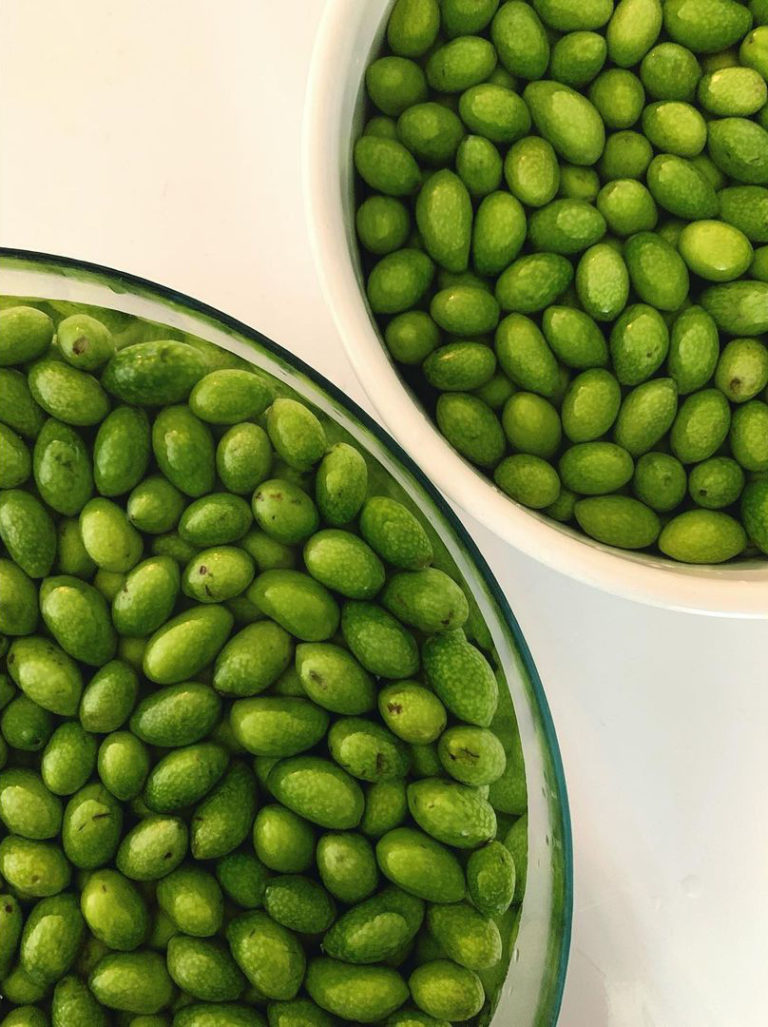Pelustka is fermented pink farmer's sauerkraut with beet and celery.
The vibrant color, spicy flavor and rugged texture, Pelustka is fermented Ukrainian-style white cabbage (Ukrainian Пелюстка) and one of the most popular snacks in all Eastern European states. The magenta-pink color is one of the defining features of this sauerkraut. The secret of its aromatic taste and unique color lies in the combination of white cabbage, beet, celery leaves, garlic and hot chili.
Jump to recipeAmong the many ways to ferment white cabbage, this chunky sauerkraut is an absolute favorite. And the best thing about it is that it can be eaten just a few days after being made.
The name pelustka translates to flower petal. In fact, the cabbage leaves colored by the beet are reminiscent of the petals of a rose. When this ferment is beautifully presented on a plate as an appetizer, it becomes an irresistible eye-catcher on a festive table.


Mzhave
This delicious kraut is also appreciated in Georgia. There it is known as mzhave (Georgian მჟავე კომბოსტო).
Basically, it is not much different from Ukrainian pelustka, except that a lot of additional ingredients are used. Most notably, a variety of aromatic herbs and spices, as is common in Georgian cuisine. Mzhave is particularly characterized by a distinct spiciness, which is created by adding chilli to the mixture.
You can also add carrots and kohlrabi to the ferment, spices such as ground pepper or pink berries, horseradish root, parsley and bay leaves are also acceptable. So there is plenty of scope for creativity in the preparation.





Das tönt verführerisch! vielen Dank für das Rezept. Ich glaube nicht, dass ich Sellerieblätter bekomme. Bei uns sind die Knollen nur ohne Grün zu kaufen. Soll ich ein paar Scheiben oder Raspeln vom Knollen beigeben als Würze oder eignet sich das schlecht?
Liebe Barbara,
bei uns gibt es Sellerie mit Grün immer im Frühjahr und im Spätsommer, sogar im Supermarkt. Wenn Du noch ein bisschen warten kannst – es lohnt sich, die Blätter schmecken ganz anders als die Knollen. Wenn überhaupt, würde sie eher mit Stangensellerie ersetzen. Du kannst sie auch weglassen, das Kraut schmeckt auch ohne superlecker!
Berichte gerne von Deinem Ergebnis.
Best regards,
Katsu
Hallo Katsu,
Heute gab es mein erstes Pelustka😀 Wir haben es zusammen mit unseren ukrainischen Mitbewohnern gekostet, und uns hat es allen sehr sehr gut geschmeckt. Laut unserer Mitbewohner macht man in der Ukraine dieses Kraut mit Essig und Zucker. Für mich persönlich war es so nach deinem Rezept perfekt. Auch die Lake ist so was von lecker,unglaublich gut👍👍
Also vielen Dank für diese Inspiration, das werde ich bestimmt wieder machen.
Alles Liebe und einen schönen Restsonntag 😀
Carolin
Hej Caro,
das ist ja schön, dass ihr es gemeinsam gegessen und es euch gut geschmeckt hat. Ja, es wird häufig nicht fermentiert, sondern schnell süss-sauer angemacht. Das ist auch lecker 🙂
Herzlichst,
Katsu
Das klingt sehr lecker und ich werde es gerne ausprobieren.
Ist es egal welches Salz man verwendet?
Viele Grüße 👋
Hej Iris,
ja. Nimm einfach das Salz, was du sowieso zuhause hast.
Gutes Gelingen!
Katsu
Hallo Katsu,
was hälst du von Liebstöckl anstatt Selleriekraut? Das hätte ich im Garten…
Ob die Pelustka dann noch original und lecker ist?
Hej Alexander,
das Selleriegrün bringt einen besonderen Geschmack mit, ich würde es durch nichts ersetzen wollen.
Gutes Gelingen!
Katsu
Liebe Katsu,
Pelustka nach Deinem Rezept ist ein wahrer Genuss. Es ist eines unserer größten Favoriten geworden. Wir und unsere Freunde lieben es. Vielen Dank dafür.
Sonnige Grüße
Sabine
Danke, das freut mich sehr! Guten Appetit weiterhin <3
Hallo Katsu,
Kann ich auch eingefroren oder getrocknet Chili verwenden. Ich habe noch so viele, aus meinem Garten, vom letzten Jahr. Da möchte ich jetzt keine frische Chili kaufen. Die Fermente sollen mir dazu dienen meine Ernte haltbar zu machen. Ich möchte so wenig wie möglich dazukaufen.
Vielen Dank für die Rezepte.
Die Radieschen waren schon mal super Lecker
Hej Sarah,
na klar, unbedingt! Genau darum geht es ja.
Geniesse das Rezept und gutes Gelingen!
Katsu
Danke <3